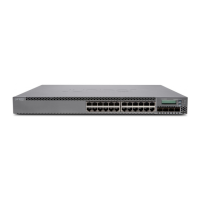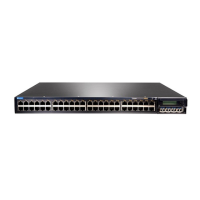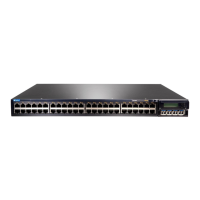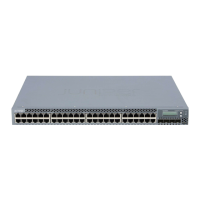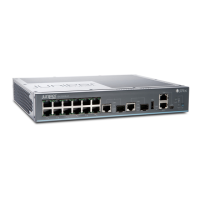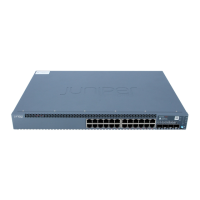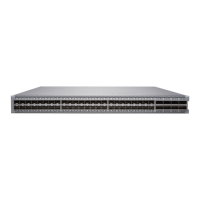To configure liveness detection for DHCP local server:
1. Specify that you want to configure liveness detection.
•
For DHCP global configuration:
[edit system services dhcp-local-server]
user@host# edit liveness-detection
•
For DHCP group configuration:
[edit system services dhcp-local-server group group-name]
user@host# edit liveness-detection
NOTE: Liveness detection is also supported for DHCPv6 configurations.
To configure DHCPv6 liveness detection, include the liveness-detection
statement, and any subsequent configuration statements, at the [edit
system services dhcp-local-server dhcpv6] or [edit system services
dhcp-local-server dhcpv6 group group-name] hierarchy level.
2. Specify that you want to configure the liveness detection method.
•
For DHCP global configuration:
[edit system services dhcp-local-server liveness-detection]
user@host# edit method
•
For DHCP group configuration:
[edit system services dhcp-local-server group group-name liveness-detection]
user@host# edit method
3. Specify the liveness detection method that you want DHCP to use.
NOTE: The only method supported for liveness detection is Bidirectional
Forwarding Detection (BFD).
•
For DHCP global configuration:
[edit system services dhcp-local-server liveness-detection method]
user@host# edit bfd
•
For DHCP group configuration:
[edit system services dhcp-local-server group group-name liveness-detection method]
user@host# edit bfd
4. Configure the liveness detection method as desired.
See Example: Configuring Group Liveness Detection for DHCP Local Server Clients for
an example of how to configure DHCPv4 groups for DHCP local server liveness
detection.
5. Configure the action the router takes when a liveness detection failure occurs.
97Copyright © 2017, Juniper Networks, Inc.
Chapter 7: DHCP Liveness Detection

